Your cart is currently empty!
Month: July 2024
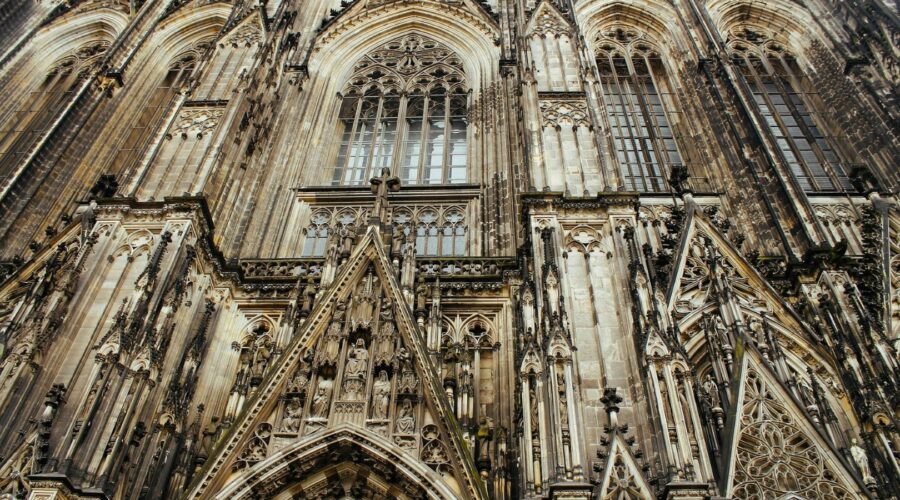
Discover the Calvary Chapel Experience: Find a Calvary Chapel Near You
Are you searching for a vibrant and welcoming church community where you can connect with God and grow in your faith? Look no further than Calvary Chapel. With locations across the country, Calvary Chapel offers a diverse array of churches that cater to the needs of all seekers.
What is Calvary Chapel?
Calvary Chapel is a non-denominational evangelical Christian church movement that emphasizes the teachings of the Bible. Founded in 1965 by Pastor Chuck Smith, Calvary Chapel has grown into a global network with over 1,900 churches worldwide.
Core Beliefs
- The Bible is the infallible and authoritative Word of God.
- Jesus Christ is the only Savior, and salvation is by grace through faith alone.
- The Holy Spirit indwells all believers and empowers them for Christian living.
- The church is the body of Christ and a community of believers.
- Evangelism and discipleship are essential for the growth of the church.
Why Choose Calvary Chapel?
There are countless reasons to choose Calvary Chapel, including:
Bible-Centered Preaching
Calvary Chapel preachers prioritize the expositional teaching of the Bible. They believe that God’s Word has the power to transform lives and lead people to a deeper understanding of God.
Spirit-Filled Worship
Worship is a central part of the Calvary Chapel experience. With a blend of contemporary and traditional music, Calvary Chapel churches create an atmosphere where believers can connect with God and express their love and adoration.
Community Involvement
Calvary Chapel churches are deeply involved in their communities, providing a variety of outreach programs and ministries that serve the needs of those around them. From food banks to youth groups, Calvary Chapel churches strive to make a difference in the lives of others.
Finding a Calvary Chapel Near You
Locating a Calvary Chapel near you is easy. Simply use the following resources:
- Calvary Chapel Website: The Calvary Chapel website has a comprehensive list of all Calvary Chapel churches worldwide.
- Google Maps: Search for “Calvary Chapel near me” on Google Maps to find Calvary Chapel churches in your area.
- Local Directory: Check your local directory or online yellow pages for Calvary Chapel churches in your neighborhood.
Benefits of Attending Calvary Chapel
Attending Calvary Chapel offers numerous benefits, such as:
Spiritual Growth
Through Bible teaching, worship, and fellowship, Calvary Chapel churches provide a supportive environment for spiritual growth and maturity.
Community Connections
Calvary Chapel churches are communities of believers who care about one another. They offer opportunities for fellowship, support, and encouragement.
Service Opportunities
Calvary Chapel churches are always looking for volunteers to serve in various ministries and outreach programs. Serving others is a great way to make a difference in your community and grow in your faith.
Conclusion
Whether you are a seasoned believer or a newcomer to the Christian faith, Calvary Chapel offers a welcoming and dynamic church experience. Their Bible-centered preaching, Spirit-filled worship, and community involvement can help you grow in your faith, connect with others, and make a positive impact in your community. Find a Calvary Chapel near you today and embark on a journey of spiritual transformation.
Frequently Asked Questions
Q: What are the worship services like at Calvary Chapel?
A: Calvary Chapel worship services typically include a mix of contemporary and traditional music, as well as a Bible-centered message. Services are designed to be engaging and relevant to all.
Q: Do I need to be a member to attend Calvary Chapel?
A: No, you do not need to be a member to attend Calvary Chapel. Visitors and newcomers are always welcome.
Q: What are the opportunities for service at Calvary Chapel?
A: Calvary Chapel churches offer a wide range of service opportunities, including outreach ministries, food banks, children’s programs, and worship teams. Visit the website of your local Calvary Chapel to learn about specific opportunities.
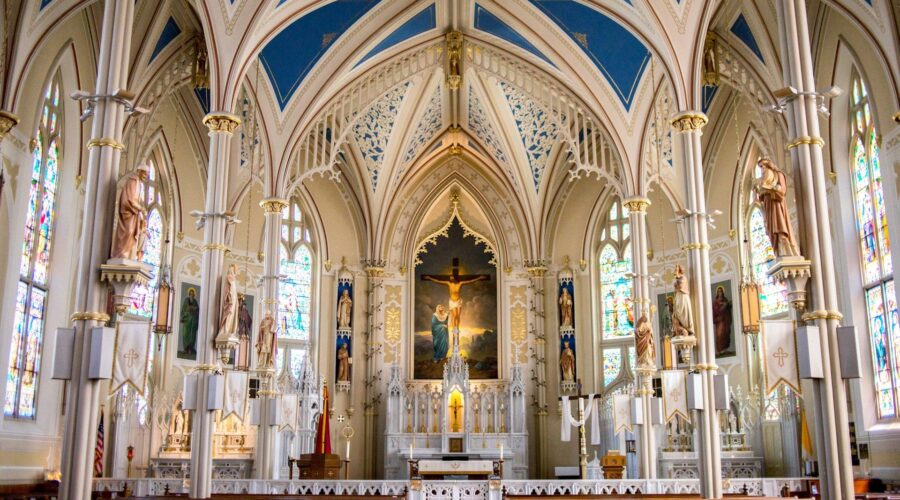
Discover the Riverside Church: A Historical and Spiritual Landmark in New York City
Nestled on the Upper West Side of Manhattan, Riverside Church stands as a beacon of architectural grandeur and spiritual significance. With its soaring Gothic spires and stunning stained-glass windows, the church has become a beloved landmark in New York City and a destination for tourists and pilgrims alike.
History and Architecture
Riverside Church was conceived in the early 20th century by a group of visionary philanthropists and clergy. The cornerstone was laid in 1927, and the building was completed in 1930. Designed by renowned architect Henry C. Pelton, the church is a masterpiece of Gothic Revival architecture.
Key Architectural Features
- Soaring nave with a height of 124 feet
- Twin bell towers reaching 392 feet
- Massive stained-glass windows depicting scenes from the Bible
- Imposing stone facade adorned with gargoyles and carvings
Religious Significance
Riverside Church is a vibrant and diverse interdenominational Christian congregation. It is affiliated with both the United Church of Christ and the American Baptist Churches USA.
The church’s mission is to promote interfaith dialogue, social justice, and peace. It hosts a wide range of religious services, including:
- Traditional Sunday worship
- Prayer services
- Bible study groups
- Youth programs
Community Engagement
Beyond its religious significance, Riverside Church plays a vital role in the surrounding community.
Social Justice Initiatives
- Advocacy for affordable housing
- Support for immigrant rights
- Work with homeless and low-income populations
Cultural and Educational Programs
- Concerts by renowned musicians and choirs
- Lectures and discussions on current affairs
- Exhibitions in the church’s art gallery
Visiting Riverside Church
Riverside Church welcomes visitors from all over the world.
Tours
- Guided tours are available during the week and on weekends.
- Tours cover the church’s history, architecture, and religious significance.
Services
- Sunday worship services are held at 11:00 AM and 8:00 PM.
- Weeknight services are held on Wednesdays at 7:00 PM.
Practical Information
- Address: 490 Riverside Drive, New York, NY 10027
- Phone: (212) 870-6700
- Website: https://www.riversidechurchny.org/
Conclusion
Riverside Church is a testament to the enduring power of faith, architecture, and community engagement. It is a place where people from all walks of life can come together to worship, learn, and inspire each other. Whether you are seeking spiritual guidance or simply admiring its architectural beauty, Riverside Church is a destination that will leave a lasting impression.
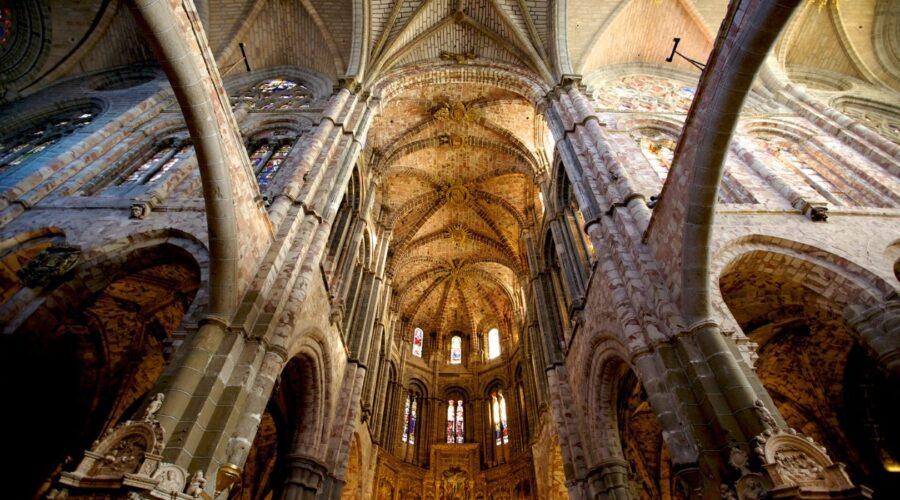
Unlocking the Essence of HTB Church: A Comprehensive Guide
Introduction
HTB Church, an acronym for Holy Trinity Brompton, is a vibrant and influential evangelical church based in London, United Kingdom. Founded in 1953, HTB has become renowned for its innovative worship style, mission-oriented approach, and commitment to social justice. This comprehensive guide provides an in-depth exploration of HTB Church, its history, beliefs, and impact on the Christian landscape.
History of HTB Church
Early Years (1953-1968)
HTB Church emerged from the merger of two small parishes in West London: St. Augustine’s, Brompton, and Holy Trinity, Prince Consort Road. Under the leadership of John Stott, a renowned Anglican theologian, HTB experienced significant growth. Stott emphasized biblical authority and practical Christianity, laying the foundation for the church’s future direction.
Alpha Course (1977)
In 1977, HTB launched the Alpha Course, a 10-week introduction to the Christian faith. Designed as a welcoming and non-judgmental space, Alpha has become a global phenomenon, inspiring churches and organizations worldwide to create similar courses.
Expansion and Global Impact (1980s-Present)
Throughout the 1980s and beyond, HTB continued to expand its reach. The church established satellite locations across the UK and planted churches internationally. Today, HTB has a global network of over 500 churches and ministries, making a significant impact on the spread of Christianity.
Beliefs and Core Values
Doctrinal Statement
HTB Church adheres to a conservative evangelical theological position, outlined in its doctrinal statement. This includes belief in the Trinity, the deity of Christ, the authority of Scripture, and the importance of evangelism.
Core Values
Five core values shape the ministry and outreach of HTB Church:
- Word and Spirit: Emphasis on both biblical teaching and the power of the Holy Spirit in worship, evangelism, and discipleship.
- Mission: Prioritization of sharing the gospel and reaching out to the lost and marginalized.
- Church as Family: Foster a sense of community, support, and belonging among members.
- Discipleship: Committed to helping believers grow in their faith and follow Christ.
- Excellence: Striving for high standards in all aspects of ministry, including worship, teaching, and leadership.
Impact and Influence
Worship and Music
HTB Church is known for its innovative and engaging worship style. The church’s worship team has produced numerous acclaimed albums and songs, and its music has influenced churches around the world.
Social Justice
HTB has a strong commitment to social justice and community outreach. Through partnerships with local organizations and initiatives, the church supports vulnerable populations, provides practical assistance, and advocates for justice and equality.
Leadership Development
HTB Church has established a reputation for developing and training effective leaders. The church’s leadership program has produced numerous church planters, pastors, and Christian leaders who are making an impact both locally and globally.
Conclusion
HTB Church is a dynamic and influential Christian community that has made significant contributions to the faith. Its commitment to biblical authority, missional outreach, and social justice has shaped its ministry and impact. Through its innovative Alpha Course, engaging worship, and leadership development initiatives, HTB continues to inspire and equip believers worldwide.
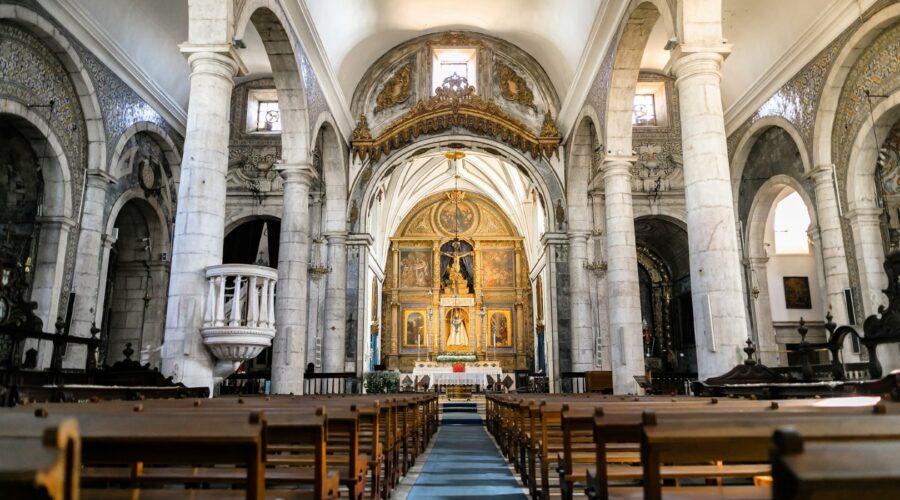
Unveiling the Splendors of the Sacré-Cœur Basilica: A Comprehensive Guide
Introduction
Nestled atop the bohemian heights of Montmartre, the Sacré-Cœur Basilica stands as a majestic symbol of the City of Lights, drawing millions of visitors each year. This magnificent edifice not only captivates with its architectural grandeur but also holds a profound spiritual significance in the heart of Paris.
History and Architecture
Conception and Construction
The Sacré-Cœur’s conception was sparked by a vow made during the Franco-Prussian War. In 1870, a group of devout Parisians promised to erect a church dedicated to the Sacred Heart of Jesus if the city was spared from invasion. After the war’s end, the construction of the basilica commenced in 1875 and spanned nearly 40 years.
Architectural Style
The basilica’s unique architectural style is an eclectic blend of Romanesque Revival, Byzantine Revival, and Art Deco influences. The white limestone facade, adorned with intricate carvings and mosaics, creates a striking contrast against the blue Parisian sky. The massive central dome, reaching a height of 83 meters, dominates the skyline and serves as a prominent landmark.
Interior Features
Nave and Apse
Stepping inside the Sacré-Cœur, visitors are greeted by an awe-inspiring nave. Towering stained glass windows depict scenes from the life of Christ, flooding the interior with vibrant hues. The apse, behind the main altar, is adorned with a spectacular mosaic depicting Christ’s Sacred Heart.
Mosaics and Frescoes
The basilica is renowned for its exquisite mosaics and frescoes. The largest mosaic, covering the entirety of the apse, was created by Luc-Olivier Merson and depicts Christ’s mission to Redeem humanity. Other notable mosaics depict the Passion, Resurrection, and Ascension of Christ.
Crypt
Beneath the main basilica lies a vast crypt. It houses the remains of Marius-Victor Guillon, the architect who dedicated his life to the construction of the Sacré-Cœur, as well as other notable figures associated with the church.
Pilgrimage and Worship
Sacred Heart Devotion
The Sacré-Cœur has become a prominent pilgrimage site for Catholics worldwide. Pilgrims come to venerate the relics of Saint Margaret Mary Alacoque, who promoted devotion to the Sacred Heart. The basilica also hosts regular masses, prayer services, and confessions.
Blessing of Paris
Every evening, the Sacré-Cœur’s bells ring out to bless Paris. This tradition began in 1885 and has continued ever since, symbolizing the basilica’s role as a spiritual protector of the city.
Visitor Information
Admission and Hours
The Sacré-Cœur is open to visitors daily, with free admission to the basilica. Guided tours are available for a fee.
Transportation
The basilica is accessible by metro (Lines 2 and 12) or by bus (Lines 30, 31, 54, and 80).
Nearby Attractions
The Sacré-Cœur is situated in the vibrant neighborhood of Montmartre. Visitors can explore the streets, browse local markets, and visit other landmarks such as the Musée de Montmartre and the Lapin Agile cabaret.
Tips for Visiting
* Arrive early to avoid crowds, especially during peak tourist season.
* Dress respectfully, as the basilica is a place of worship.
* Take time to admire the intricate details of the architecture and artwork.
* Stay for the evening blessing of Paris for a truly atmospheric experience.
* Consider visiting the crypt to learn more about the history of the basilica and its architects.Conclusion
The Sacré-Cœur Basilica stands as a testament to the faith and devotion of the Parisian people. Its architectural splendor, inspiring mosaics, and pilgrimage significance make it an unmissable destination for visitors seeking spiritual and artistic enrichment. By exploring the depths of this magnificent edifice, one can gain a deeper understanding of Paris’s rich history and cultural legacy.
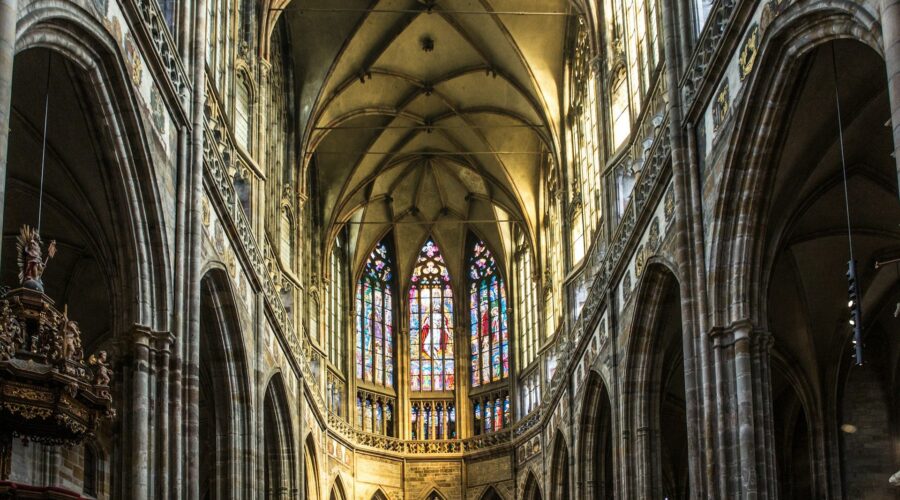
Daily Mass: A Guide to the Catholic Celebration
What is Daily Mass?
Daily Mass, also known as the Eucharist or Holy Mass, is a central part of Catholic life. It is a liturgical celebration in which bread and wine are consecrated and shared among the faithful, representing the body and blood of Jesus Christ.
Significance of Daily Mass
- Spiritual nourishment and growth: Daily Mass provides spiritual nourishment and helps you connect deeply with God.
- Sacrificial offering: It is a sacrificial offering that reminds us of Christ’s passion, death, and resurrection.
- Community building: Mass fosters a sense of community and unity among believers.
- Intercessory prayer: It allows us to intercede for our loved ones, the world, and our own needs.
Structure of Daily Mass
- Introductory Rites: Greeting, penitential act, Gloria.
- Liturgy of the Word: Readings from Scripture, homily.
- Liturgy of the Eucharist: Presentation of the gifts, Eucharistic Prayer, consecration, Lord’s Prayer, communion.
- Concluding Rites: Blessing, dismissal.
How to Prepare for Daily Mass
- Be on time: Arrive with enough time to settle in and prepare your heart.
- Dress respectfully: Wearing appropriate attire shows reverence for the sacrament.
- Read the readings in advance: This helps you understand the message and participate more fully.
- Come with an open heart: Approach Mass with a desire to encounter Christ and receive his grace.
Benefits of Daily Mass
- Spiritual growth: Regular attendance at Mass nourishes your soul and strengthens your faith.
- Peace and joy: Experiencing the presence of Christ brings a deep sense of peace and joy.
- Grace: Receiving the Eucharist grants actual graces that can transform your life.
- Community: Connecting with other believers in prayer and worship fosters fellowship and support.
Tips for Making Daily Mass a Regular Habit
- Prioritize it: Schedule Mass into your daily routine and make it a priority.
- Find a convenient time and place: Explore different Mass times and locations to find what works best for you.
- Join a community: Connecting with a parish or small group can provide encouragement and support.
- Be patient and persevere: It may take time to establish a daily Mass habit, but the rewards are worth it.
Conclusion
Daily Mass is a profound and transformative experience that brings you closer to Christ and the Catholic community. By embracing it regularly, you open yourself up to spiritual growth, grace, and a deeper connection with God. Make it a part of your life and discover the transformative power of this sacred celebration.
Day Mass Times Monday 7:00 AM, 12:00 PM Tuesday 7:00 AM, 5:30 PM Wednesday 7:00 AM Thursday 7:00 AM, 12:00 PM Friday 7:00 AM, 5:30 PM Saturday 8:00 AM (Vigil Mass) Sunday 8:00 AM, 10:30 AM, 12:30 PM, 5:00 PM 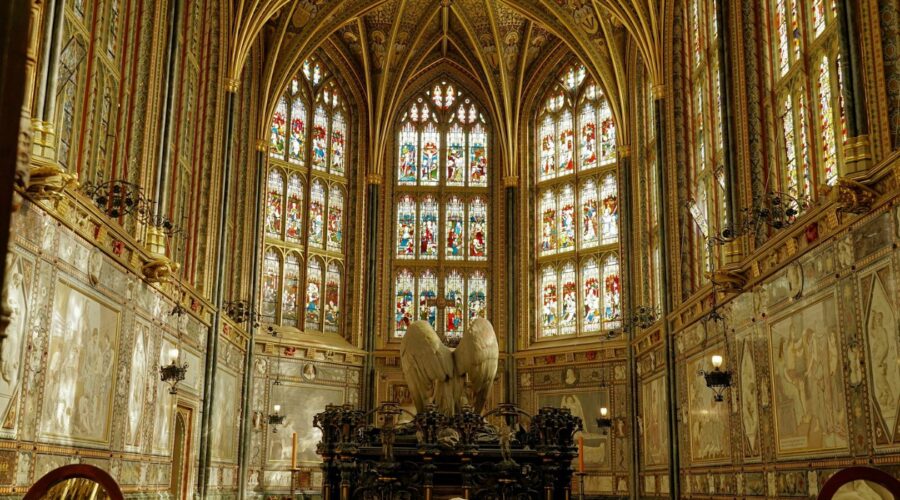
St Peter: Exploring the Life, Beliefs, and Significance of the Rock Upon Which the Church Was Built
Introduction
St Peter, known as the “Rock” upon which Jesus built his church, holds a central position in Christian history and theology. As one of the twelve apostles, he played a pivotal role in the early development of the church and left a lasting legacy that continues to shape the faith today. This comprehensive guide dives into the life, beliefs, and significance of St Peter, providing a detailed exploration of his character, teachings, and impact on Christianity.
A Fisherman from Galilee: Peter’s Early Life
Peter was born Simon in Bethsaida, a small fishing village on the Sea of Galilee. The son of John and brother of Andrew, he grew up in a humble family and earned his living as a fisherman. Despite his simple upbringing, Peter possessed a strong and inquisitive nature that would later lead him to become a prominent disciple of Jesus.
Called to Follow Jesus: Peter’s Conversion
Peter’s life took a transformative turn when he encountered Jesus. According to the Gospels, Jesus called out to Peter and his brother Andrew as they were casting their nets into the sea. Moved by Jesus’ words and presence, Peter left his boat and followed him. From that moment, Peter’s life would be forever intertwined with the teachings and mission of Jesus Christ.
A Key Figure in the Early Church
As a disciple of Jesus, Peter played a central role in the early church. He was among the twelve closest followers of Jesus, witnessing his miracles, teachings, and ultimately his crucifixion and resurrection. Peter was known for his boldness and enthusiasm, earning him the nickname “Cephas,” meaning “rock” in Aramaic. It was on this “rock” that Jesus declared he would build his church (Matthew 16:18).
Mission to the Gentiles
While Peter was initially commissioned to preach primarily to the Jewish people, he later received a vision from God that led him to minister to the Gentiles as well. This significant event marked a turning point in the history of Christianity, as it opened the door for the faith to spread beyond its Jewish roots and reach people from all nations.
Peter’s Teachings and Beliefs
Peter’s teachings and writings, particularly his two epistles in the New Testament, provide valuable insights into his beliefs and understanding of the Christian faith. In his letters, Peter emphasizes the following key themes:
- Salvation through faith in Jesus Christ: Peter taught that salvation is not earned through works of the law but is received by grace through faith in Jesus Christ (1 Peter 1:18-19).
- The importance of holiness and good works: While Peter emphasized the free gift of salvation, he also taught that Christians are called to live holy and righteous lives, reflecting the character of God they serve (1 Peter 1:14-16).
- Suffering and persecution as a means of growth: Peter recognized that Christians may face trials and tribulations, but he encouraged them to view these experiences as opportunities for spiritual growth and refinement (1 Peter 5:6-11).
Peter’s Legacy and Significance
Peter’s legacy extends far beyond his lifetime. He is considered one of the foundational pillars of the Christian faith, and his teachings and writings continue to shape Christian doctrine and practice today. His enduring significance includes:
The First Pope
According to Catholic tradition, Peter was appointed by Jesus as the first pope, or leader of the church. This belief is based on passages such as Matthew 16:18-19, where Jesus gives Peter the “keys to the kingdom of heaven.” While the historical accuracy of this claim is disputed among different Christian denominations, Peter’s central role in the early church is widely acknowledged.
Founder of the Christian Church in Rome
Peter is believed to have traveled to Rome and preached the gospel there. According to Christian tradition, he was martyred in Rome during the reign of Emperor Nero. The Vatican, the center of the Catholic Church, is built on the site where Peter was believed to have been crucified.
Patron Saint of Fishermen and the Papacy
Due to his vocation as a fisherman before becoming a disciple of Jesus, Peter is considered the patron saint of fishermen. Additionally, he is the patron saint of the papacy, as he is seen as the first in the line of popes who have led the Catholic Church throughout history.
Conclusion
St Peter was a pivotal figure in the history of Christianity, leaving an enduring legacy that continues to shape the faith today. From his humble beginnings as a fisherman to his role as a key disciple of Jesus and the traditional founder of the church in Rome, Peter’s life and teachings provide a rich tapestry of faith, leadership, and enduring significance. Understanding Peter’s journey and beliefs offers invaluable insights into the foundations and core tenets of Christianity.
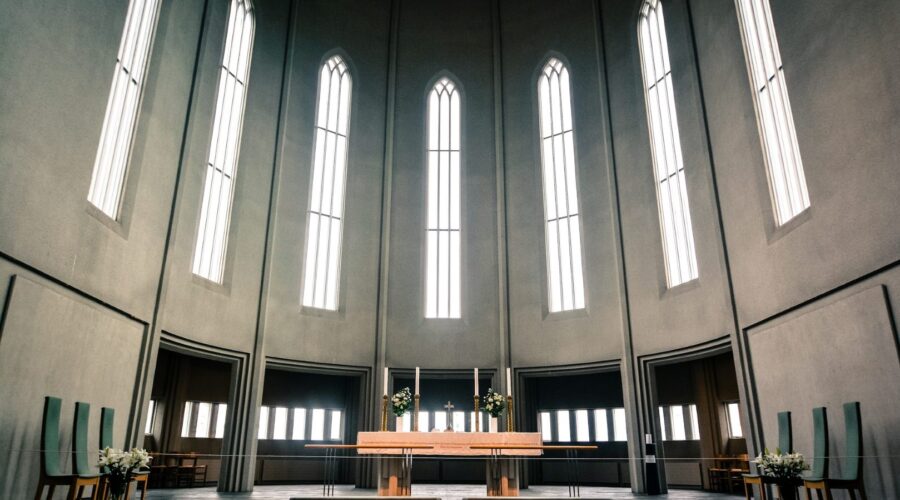
National Shrines: A Symbol of Faith, History, and Cultural Significance
Introduction
National shrines are sacred sites that hold immense religious, historical, and cultural significance for a nation. These hallowed grounds are often dedicated to a particular deity, a revered figure, or an important event that has shaped the national identity. National shrines serve as beacons of faith, pilgrimage destinations, and symbols of unity and heritage.
Types of National Shrines
Religious Shrines
- Dedicated to revered deities, saints, or religious figures
- Examples: Basilica of the National Shrine of the Immaculate Conception (Washington, D.C.), Our Lady of Lourdes Shrine (France)
Historical Shrines
- Commemorate significant historical events or individuals
- Examples: National Mall (Washington, D.C.), Gettysburg National Military Park (Pennsylvania)
Cultural Shrines
- Represent important aspects of a nation’s culture and heritage
- Examples: Stonehenge (United Kingdom), Great Sphinx of Giza (Egypt)
Significance of National Shrines
Religious Significance
- Provide a sacred space for worship, prayer, and contemplation
- Foster devotion, pilgrimage, and spiritual connection
Historical Significance
- Preserve memories of past events, people, and sacrifices
- Offer a tangible connection to a nation’s history and heritage
Cultural Significance
- Reflect a nation’s values, beliefs, and artistic traditions
- Provide insight into the evolution of a society’s cultural identity
Examples of National Shrines
United States
- Lincoln Memorial
- Martin Luther King Jr. Memorial
France
- Sacré-Cœur Basilica
- Notre-Dame Cathedral
Italy
- Vatican City
- St. Peter’s Basilica
Visiting a National Shrine
Planning
- Check for visitation schedules, closures, and special events
- Dress respectfully and adhere to any dress codes
- Be mindful of religious protocols and respectful of sacred spaces
Conduct
- Maintain a respectful demeanor and avoid loud or disruptive behavior
- Follow designated paths and stay within marked areas
- Respect the privacy of worshippers and avoid interfering with religious ceremonies
Conclusion
National shrines are invaluable treasures that embody the spirit of a nation. They are places of spiritual devotion, historical remembrance, and cultural heritage. Visiting a national shrine is a profound experience that enriches our understanding of a country, its people, and its values. By preserving and respecting these sacred sites, we ensure their enduring significance for generations to come.
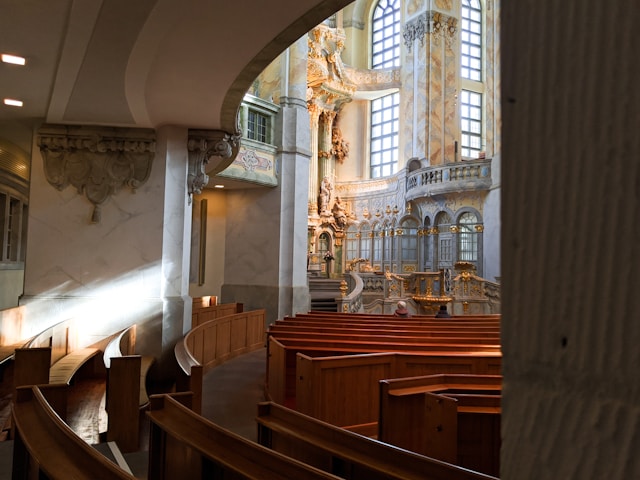
Unveiling the Open Door Church: A Sanctuary of Inclusivity and Acceptance
Embracing the Essence of Open Door Churches
In the tapestry of Christianity, open door churches stand as beacons of inclusivity, welcoming individuals from all walks of life with open arms. They embody the belief that faith knows no boundaries, transcending societal norms and prejudices.
Pillars of an Open Door Church
Accessibility
Open door churches prioritize accessibility for all, removing physical and social barriers. They provide wheelchair access, ample seating, and clear signage to ensure that everyone feels comfortable and included.
Unconditional Love
Central to the open door church is unconditional love. Pastors and members extend compassion and acceptance to all attendees, regardless of their past experiences, current circumstances, or beliefs.
Diversity and Inclusion
These churches celebrate diversity, fostering a community where individuals from different cultures, races, genders, orientations, and abilities feel welcomed and valued.
Non-Judgmental Environment
A key characteristic of open door churches is their non-judgmental environment. They create spaces where individuals can explore their spirituality without fear of criticism or condemnation.
Benefits of Attending an Open Door Church
- Sense of Belonging: Open door churches provide a sense of belonging to those who may feel marginalized elsewhere.
- Spiritual Growth: The accepting and non-judgmental environment allows for deeper spiritual growth and exploration.
- Community Involvement: These churches often offer various programs and activities, fostering community involvement and connection.
- Support System: Open door churches provide a supportive network for individuals seeking guidance, encouragement, and prayer.
- Interfaith Dialogue: Some open door churches encourage interfaith dialogue, promoting understanding and respect among different religious traditions.
Finding an Open Door Church
Finding an open door church can be a rewarding experience. Here are some tips:
- Online Research: Visit church websites and social media pages to gather information about their mission and beliefs.
- Attend Services: Visit different churches in your area to experience their atmosphere and meet the congregation.
- Inquire with Friends and Family: Ask for recommendations from friends, family members, or acquaintances who attend open door churches.
- Contact Local Organizations: Reach out to organizations that support marginalized communities, as they may have connections to open door churches.
- Use Online Directories: Utilize online directories, such as OpenDoorChurches.org, to search for open door churches in your vicinity.
Conclusion
Open door churches are havens of inclusivity and acceptance, offering a place of belonging to those who seek spiritual growth and community. Their emphasis on accessibility, unconditional love, and diversity creates a welcoming environment that fosters personal and spiritual transformation. By attending an open door church, individuals can experience the transformative power of a faith that embraces all.
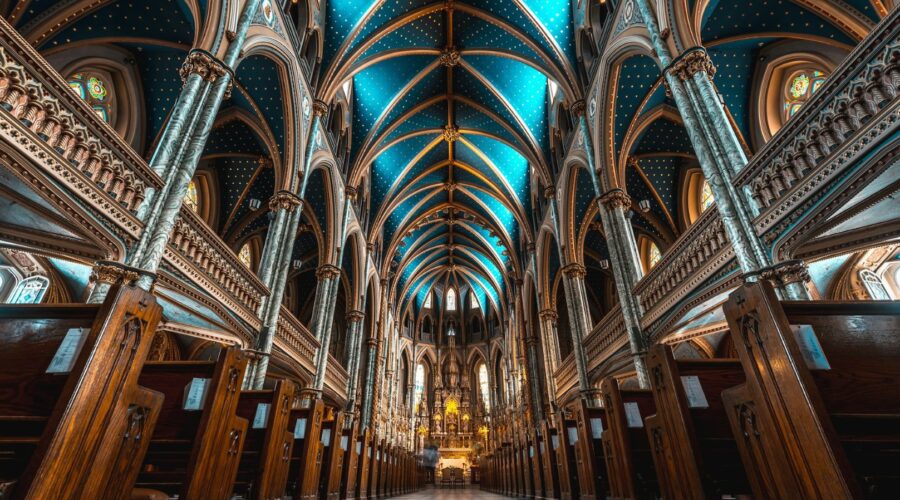
Unveiling the Pillars of the Church: A Comprehensive Guide
What is the Church?
The Church, derived from the Greek word “ekklesia,” refers to a community of believers who profess faith in Jesus Christ. It encompasses both the visible institution and the invisible fellowship of all Christians, transcending boundaries of time and space.
Origins and History
The Church traces its roots back to the first-century followers of Jesus. As the Gospel spread throughout the Roman Empire, local assemblies or congregations formed. Over time, these communities developed organizational structures and doctrinal beliefs.
The Nature of the Church
1. Christ’s Bride and Body
The Church is often referred to as the bride of Christ (Ephesians 5:25-32). This metaphor symbolizes the intimate relationship between Jesus and his followers. Additionally, the Church is described as the body of Christ (1 Corinthians 12:12-27), representing the unity and interconnectedness of believers.
2. The Called-Out Community
The term “ekklesia” literally means “the called-out assembly.” The Church is a distinct community set apart from the world by God’s grace. This calling implies a unique mission and responsibility to live as witnesses to Christ.
3. The House of God
The Church is not merely a building or organization but the dwelling place of God the Holy Spirit (1 Corinthians 3:16-17). As his temple, the Church is a sanctuary where God’s presence is manifested and his Word is proclaimed.
The Ministries of the Church
1. Proclaiming the Gospel
The central mission of the Church is to share the Good News of salvation through Jesus Christ. This involves preaching, teaching, and witnessing to the truth of the Gospel, both within the congregation and beyond.
2. Nurturing Believers
The Church supports and encourages its members in their spiritual growth. This includes providing discipleship programs, prayer meetings, and opportunities for fellowship and accountability.
3. Serving the World
The Church is called to extend Christ’s compassion and love to all people. This may involve outreach programs to the marginalized, social justice initiatives, and providing humanitarian aid.
Leadership in the Church
1. The Role of Pastors
Pastors, also known as elders or shepherds, are responsible for guiding and overseeing the congregation. They preach, teach, counsel, and provide spiritual direction to the flock.
2. The Role of Deacons
Deacons assist pastors in the practical aspects of ministry. They may serve in areas such as administration, finance, and outreach.
3. The Role of Laity
All members of the Church, regardless of their official roles, play an active part in its ministry. They are called to use their gifts and abilities to serve the body and extend the kingdom of God.
Challenges and Opportunities
1. Internal Challenges
The Church faces internal challenges such as doctrinal division, apathy, and worldly influences. It is crucial to foster unity, encourage spiritual growth, and maintain a clear focus on Christ.
2. External Challenges
The Church also encounters external challenges from societal trends, persecution, and cultural opposition. It is important to remain steadfast in faith, engage in prayer, and seek wisdom in navigating these obstacles.
3. Opportunities for Growth
Despite the challenges, the Church has tremendous opportunities for growth. By embracing innovation, reaching out to unchurched communities, and partnering with other organizations, the Church can expand its influence and make a transformative impact on the world.
Conclusion
The Church is a multifaceted and dynamic entity that continues to play a vital role in society. As a community of believers, it seeks to worship God, proclaim the Gospel, nurture its members, and extend Christ’s love to the world. Through its ministries, leadership, and commitment to facing challenges and embracing opportunities, the Church strives to fulfill its mission and make a lasting impact for the kingdom of God.

Unveiling the Sacred Splendor: A Comprehensive Guide to Chapels
Introduction
Chapels, sanctuaries of prayer and contemplation, grace numerous landscapes, from bustling cities to serene countryside retreats. As integral parts of religious and cultural history, they embody spiritual significance and architectural artistry. This comprehensive guide explores the multifaceted world of chapels, unraveling their origins, diverse forms, and enduring impact.
Origins and History
The concept of chapels emerged in the early Christian era. Early Christians often gathered in private homes or underground catacombs for worship. As Christianity gained acceptance, the need for dedicated places of worship grew. The construction of chapels provided a sacred space for prayer, sacraments, and community gatherings.
Over centuries, chapels evolved in various forms, reflecting different architectural styles and religious traditions. Romanesque chapels emerged in the 11th and 12th centuries, showcasing rounded arches and thick walls. Gothic chapels, popular from the 12th to the 16th centuries, featured soaring spires, pointed arches, and intricate stained glass windows.
Types of Chapels
- Ecclesiastical Chapels: Attached to larger religious institutions, such as cathedrals or churches, these chapels serve specific functions, such as weekday masses, private devotions, or as mausoleums.
- Secular Chapels: Found in public buildings, hospitals, universities, and military bases, these chapels provide spiritual nourishment to individuals within these secular settings.
- Private Chapels: Constructed within private residences or estates, these chapels are designed for personal or family worship and reflection.
- Memorial Chapels: Dedicated to the memory of loved ones or notable figures, these chapels create a sacred space for remembrance and reflection.
Architectural Features
Chapels showcase a diverse range of architectural designs, each exuding its unique character.
Exterior
- Facade: Often featuring intricate carvings, stained glass windows, and decorative buttresses, the facade sets the tone for the interior.
- Belfry or Steeple: A bell tower or steeple may adorn the chapel, providing a focal point and a means for summoning worshippers.
- Courtyard or Cloister: Some chapels are surrounded by a courtyard or cloister, providing a peaceful and contemplative outdoor space.
Interior
- Nave: The main body of the chapel, where worshippers gather for services and sacraments.
- Altar: The focal point of the chapel, where religious services are performed.
- Chancel: An elevated area behind the altar, often reserved for clergy and choir.
- Stained Glass Windows: Depicting biblical scenes or religious figures, these colorful windows create an ethereal ambiance.
- Pew or Bench Seating: Provide seating for worshippers during services and gatherings.
Religious Significance
Chapels hold deep religious and spiritual significance. They are venues for:
- Worship: Chapels offer a sacred space for prayer, contemplation, and the celebration of religious ceremonies.
- Sacraments: Many chapels perform baptisms, weddings, and communion ceremonies, marking significant milestones in the lives of believers.
- Retreat and Reflection: Chapels provide a haven for spiritual retreats, allowing individuals to deepen their connection with the divine.
- Community Building: Chapels foster a sense of belonging and community among worshippers, providing a place for shared experiences and support.
Cultural and Historical Impact
Beyond their religious significance, chapels have a profound impact on culture and history.
Cultural Heritage
Chapels are treasured historical landmarks, often showcasing remarkable architecture and artwork. They offer a glimpse into the past, preserving cultural traditions and providing a sense of continuity.
Educational Value
Many chapels serve as educational hubs, offering guided tours and lectures that explore their historical, architectural, and religious significance.
Tourism and Pilgrimage
Famous chapels attract visitors from around the world, becoming destinations for religious pilgrimage and cultural exploration.
Famous Chapels
Throughout the world, numerous chapels have gained recognition for their architectural beauty, historical significance, and religious importance.
Table 1: Notable Chapels Name Location Significance Sistine Chapel Vatican City Celebrated for Michelangelo’s stunning frescoes that adorn its ceiling and walls. King’s College Chapel Cambridge, England Known for its awe-inspiring Gothic architecture and magnificent stained glass windows. Sainte-Chapelle Paris, France Recognized for its soaring heights and exquisite stained glass windows depicting biblical scenes. Rosslyn Chapel Midlothian, Scotland Famed for its intricate carvings and alleged connection to the Knights Templar. Shrine of Guadalupe Mexico City, Mexico A major pilgrimage site that houses the venerated image of Our Lady of Guadalupe. Tips for Visiting a Chapel
- Respectful Behavior: Remember that chapels are sacred spaces. Maintain a respectful demeanor by dressing modestly and refraining from loud or disruptive behavior.
- Photography: Check for any photography restrictions before taking pictures. Some chapels may prohibit photography during services.
- Guided Tours: Take advantage of guided tours to learn about the chapel’s history, architecture, and religious significance.
- Quiet Contemplation: If the chapel is open for prayer or contemplation, take some time to reflect in silence.
- Appropriate Dress: While dress codes may vary, it is advisable to dress modestly and respectfully when visiting a chapel.
Conclusion
Chapels, with their rich history, architectural splendor, and profound religious significance, are architectural and cultural treasures. They are places of worship, reflection, and community, connecting individuals with the divine and fostering a sense of belonging. Understanding the diverse forms, architectural features, and religious importance of chapels deepens our appreciation for these sacred spaces and their enduring impact on our world.

Find the Nearest Sunday Mass for Spiritual Fulfillment
Introduction
Attending Sunday Mass is an essential practice for many Christians, providing opportunities for worship, fellowship, and spiritual growth. Finding a Sunday Mass near your location can be challenging, especially if you are new to an area or visiting from out of town. This comprehensive guide will help you locate the nearest Sunday Mass, ensuring you can continue your spiritual journey.
Finding Sunday Mass Online
Catholic Church
The CatholicMassTime.org website offers a comprehensive directory of Catholic churches worldwide, including Sunday Mass times. You can search by location, zip code, or city to find the nearest Mass.
Other Christian Denominations
Most Christian denominations have online directories where you can search for churches near you. Some popular websites include:
- ChurchFinder.com (Baptist, Evangelical, Methodist, etc.)
- Lutheran Church Director
- Episcopal Church Finder
Finding Sunday Mass in-Person
Ask Locals
If you are new to an area and have trouble finding a Sunday Mass online, ask locals for recommendations. Neighbors, colleagues, or friends may be able to point you in the right direction.
Look for Church Signs
In some areas, churches place signs on street corners or by roadways indicating their Sunday Mass times. Keep an eye out for these signs as you drive or walk.
Additional Considerations
Sunday Mass Times
Mass times can vary significantly depending on the parish and denomination. It’s always best to check online or call the church directly to confirm the schedule.
Parking and Accessibility
Consider the parking situation when choosing a Sunday Mass. Some churches have ample parking, while others may be limited. If you have mobility issues, ensure the church is accessible.
Special Masses
Many churches offer special Masses, such as youth Masses, Spanish Masses, or Masses with specific themes. Check the online directories or call the church to inquire about these special services.
Conclusion
Finding the nearest Sunday Mass is essential for maintaining your spiritual well-being. By utilizing the resources provided in this guide, you can easily locate a church near you, ensuring you can continue your worship and spiritual growth. Remember to check Mass times and parking availability before you go, and don’t hesitate to reach out to the church or local community for assistance.
FAQs
Q: What should I expect at my first Sunday Mass?
A: Each denomination has its unique liturgy, but generally, you can expect a service involving readings, prayers, singing, and a sermon.
Q: Is it acceptable to visit a church other than my own?
A: Yes, you are welcome to attend Mass at any Catholic church or other Christian denomination. However, some churches may require visitors to register.
Q: What if I have a physical disability?
A: Most churches are accessible to people with disabilities and offer assistance if needed. Contact the church beforehand to inquire about any accessibility features.
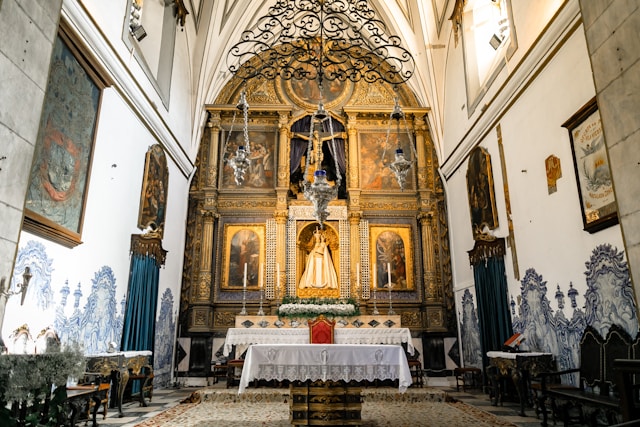
Discover the Essence of Christian Life Church: A Comprehensive Guide
What is Christian Life Church?
Christian Life Church (CLC) is a vibrant and dynamic Christian congregation rooted in biblical principles and committed to fostering spiritual growth, community, and service. Established in 1969, CLC has a rich history of impacting countless lives through its diverse ministries and community outreach programs.
Core Values and Beliefs
- The Authority of Scripture: CLC believes that the Bible is the authoritative and infallible Word of God, providing the foundation for faith and living.
- The Trinity: The church affirms the doctrine of the Trinity, acknowledging God as Father, Son (Jesus Christ), and Holy Spirit.
- Salvation through Jesus Christ: CLC proclaims that salvation is solely through faith in Jesus Christ, who died on the cross and rose again, granting eternal life.
- Spirit-Filled Living: The church encourages believers to be filled with the Holy Spirit, enabling them to live a life of power, purpose, and witness.
- Kingdom-Mindedness: CLC seeks to extend God’s Kingdom by reaching out to the community, supporting missions, and demonstrating Christian values in all aspects of life.
Ministries and Programs
Worship Services
CLC offers weekly worship services that include inspiring music, dynamic preaching, and opportunities for prayer and fellowship.
Life Groups
Life Groups are small, home-based gatherings that provide a space for Bible study, spiritual encouragement, and community building.
Youth and Children’s Ministries
The church has dedicated programs for children and youth, focusing on age-appropriate spiritual development, mentorship, and fun activities.
Missions and Outreach
CLC is actively involved in missions both locally and internationally, partnering with organizations to provide aid, support, and share the Gospel.
Community Involvement
The church engages in community outreach programs such as food pantries, homeless assistance, and volunteer opportunities.
Leadership and Staff
CLC is led by a dedicated team of pastors and staff who are passionate about serving the congregation and fulfilling the church’s mission. The pastoral team brings a wealth of experience, wisdom, and spiritual guidance.
Location and Contact Information
Christian Life Church is conveniently located at [Address]. You can contact the church office at [Phone Number] for any inquiries or to learn more about membership and involvement opportunities.
Benefits of Attending Christian Life Church
- Spiritual Growth: CLC provides a transformative environment that fosters personal and spiritual growth through worship, teaching, and community engagement.
- Authentic Community: The church emphasizes the importance of fellowship and support, creating a sense of belonging and connection among believers.
- Purposeful Living: CLC equips its members to live a life of purpose and impact, inspiring them to make a positive difference in the world.
- Service Opportunities: The church offers a wide range of service opportunities, allowing individuals to use their gifts and talents to bless others.
- Kingdom Impact: By participating in Christian Life Church, individuals become part of a larger movement that seeks to advance God’s Kingdom and make a lasting impact on society.
Conclusion
Christian Life Church is more than just a building or organization; it is a vibrant community of believers united by their faith in Jesus Christ. Whether you are seeking spiritual growth, authentic fellowship, or opportunities to serve, CLC welcomes you to experience the transformative power of the Gospel and become part of its mission to make a difference in the world.